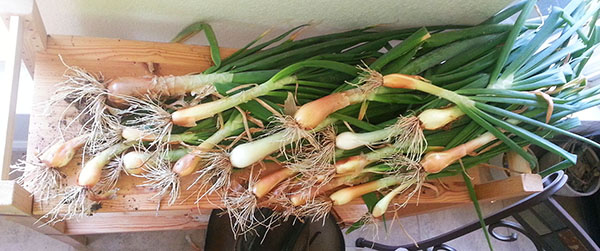
I harvested my first crop of sweet onions today, and boy was it satisfying! I planted in fall 2013 and harvested late in spring 2014.
First and foremost, I learned that onions need loose soil to grow large bulbs. I’d planted straight into the ground and mixed in some compost with the native soil, but apparently I didn’t use enough compost, because the soil quickly compacted into something so tough I had to use a shovel to get them out.
Next year I’ll apply much more rich compost to my onion plot, and a covering of mulch will keep the moisture in and temperature regulated. Onions also might not appreciate the merciless full south Texas sun or a winter that tap-danced between golf ball-sized hail and 90 degree weather in April.
Regardless, my modest onion harvest is still really tasty and will keep me stocked up on sweet onions and green onions or chives (the tops of young onions) for at least a year.
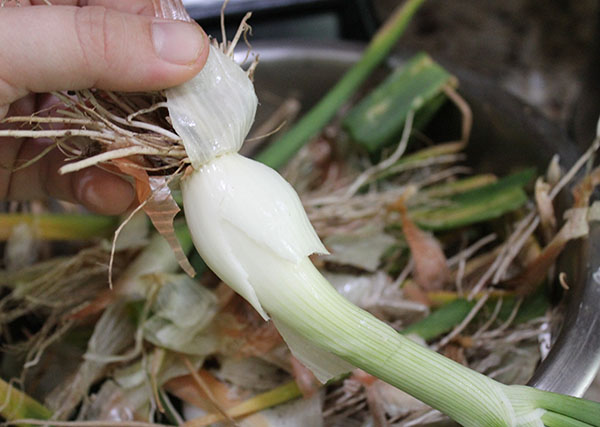
Start by removing the thin outer layers of onion that are more like paper than bulb. Save as much of the meat as you can and chop off the roots and any browned or damaged leaves. You can compost all of the waste and use them to fertilize your onion crop next year. Sweet!
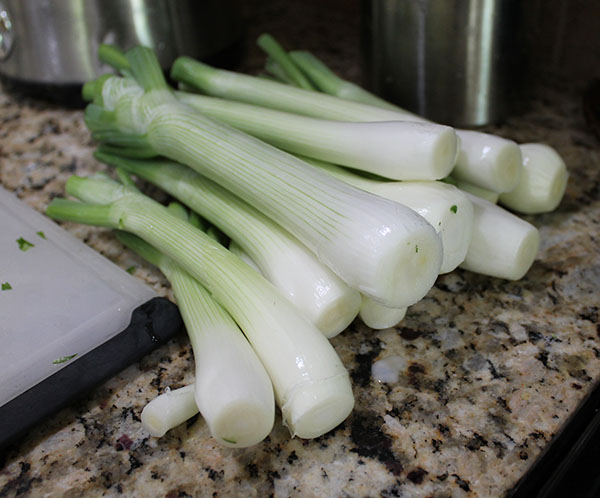
Cut your onions to separate the white bulb and base of the greens from the leaves. Obviously my sweet onions are young and not fully mature, but they’ll do the job.
The green onion leaves that are still alive and young are edible. Ever heard of green onions? If your onion tops are tender and look good to you, don’t throw them away! They’re just as edible as the white fruit, and very tasty with more of a mild flavor. You might know them as ‘chives,’ because they’re similar in taste and appearance.
You can use green onions pretty much anywhere you’d use the white part of an onion. I use onion greens in chili, soups, and any red tomato sauce for spaghetti, pizza, lasagna, shepherd’s pie, meat loaf… Onion tops are also great in many Asian dishes including traditional ramen, lettuce wraps, stir-fry, and more.
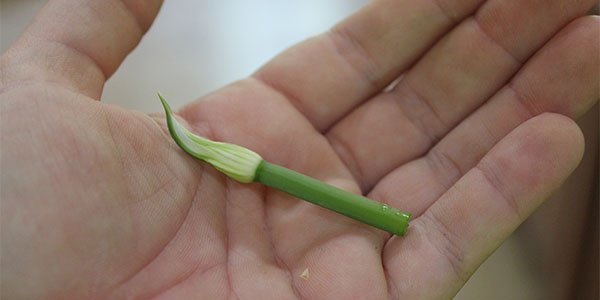
If you find anything that looks like this, you’ve spotted an onion flower bulb! Chop that sucker off and toss it in your compost pile. If you’re braver than me, you can try eating it, but I have no idea what that would taste like.
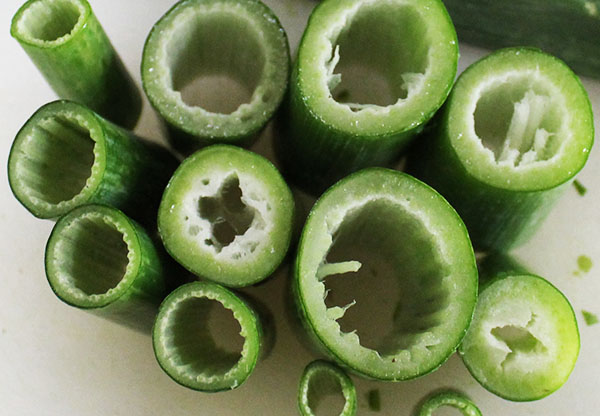
One of the leaves might be thicker than the others; this is a special stem for the onion flower. It’ll be more firm than the regular leaves, but it’s still edible. I mince these guys.
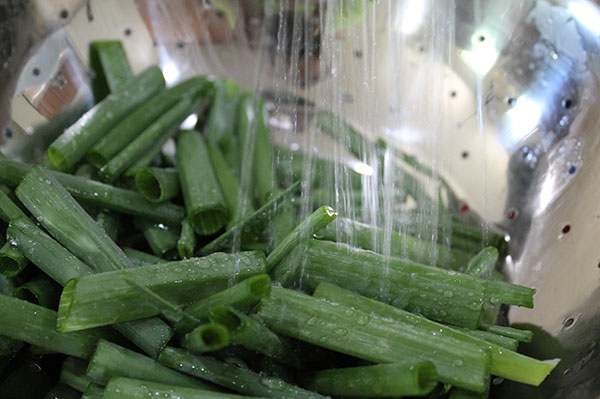
Wash your onions in a colander or strainer. If they’re from your garden you don’t have to worry about pesticides, but there may be some dirt or bugs.
Most insects will avoid onions, but I found a spider web hiding in this batch, and I’ve found a very confused caterpillar inside one of my onion greens before. Finding that in a meal would not be a pleasant surprise in my book.
Ways to prepare your onions for freezing

Minced white onions and/or onion greens. Take your white onion bulbs—or your bigger green onion leaves—and throw them into a food processor or anything that’ll mince ’em good. I use minced onion greens in chili, soup, and red sauce for spaghetti, pizza, lasagna, shepherd’s pie, meatloaf… you name it.
And of course, you can mince or chop to whatever size you like. Big chunky onion pieces might be better for chili or soups, while smaller might be better for a smooth sauce. Personally I minced and saved mine at two different sizes: I call them ‘stealth mode’ and ‘hearty.’

Classic-cut green onions. Select the best and smallest green onion leaves and chop them small. I use these for topping dishes like baked potatoes or in salads, stir-fry, or lettuce wraps.
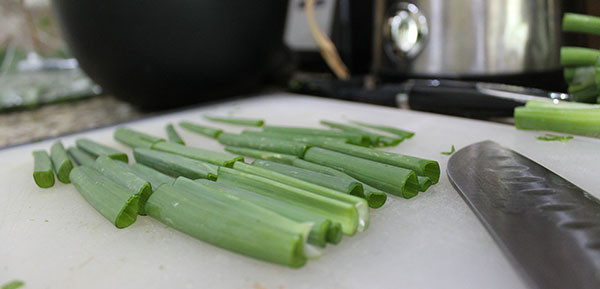
Ramen-style onion tops. If you’ve never had traditional Japanese ramen, put it on your bucket list. Green onion tops a few inches long are eaten along with other veggies in ramen stock, and boy are they good.
Cutting and saving onions like this will also give you more options later. If you want them cut in a certain way for a special dish later on in the year, you can do so from large pieces like this.
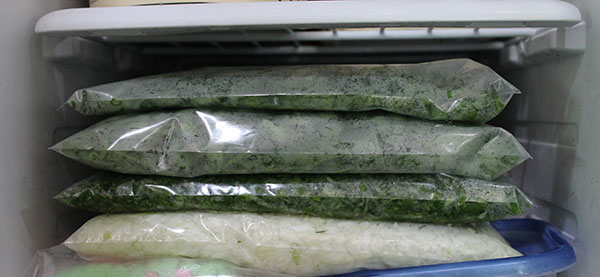
When you’re done with all of your preparation, throw your onions in freezer bags and lay them flat. This will make them freeze faster and will be easier for you to grab what you need in the future. Onions frozen in this manner should last you a year.
The total amount of work spent harvesting and processing was 3-4 hours for just one person, and maybe 6-8 hours total work from breaking the earth for the first time in the beginning to the very end. During the season, I checked up on the onions occasionally but never watered them or really did any maintenance at all.
Now treat yourself to something without onions in it. And if you made it this far without crying, I stand in awe of your mutant abilities.







Leave A Comment